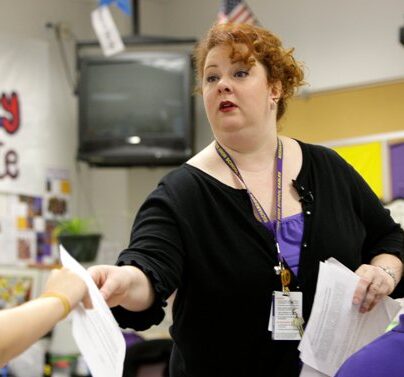Teachers aren’t the only ones leaving Missouri’s education system

JEFFERSON CITY, MO. – As many in Missouri head back to school, more than 20% of districts in the state have a new or interim superintendent.
We’ve reported on the shortage of teachers, Missouri being last in the country for educator pay, and how the pandemic has affected students. In the upcoming school year, the state faced one of the largest numbers of openings for superintendents in recent history. Of the state’s 518 school districts, 104 of them spent the summer searching for superintendents.
“The position of superintendents and for that matter, principals, has always been challenging,” said Mike Parnell, assistant executive director of the Missouri School Board Association (MSBA). “Even more so now because of the contentiousness of society.”
More than 53% of those openings are due to retirements from last school year.
“The last three years, dating back to 2019, we had openings in the mid to high 70s,” said Doug Hayter, executive director of the Missouri Association of School Administrators (MASA). “And of that 100, 70 plus are in their very first year in their role as superintendent.” According to MASA, 56 superintendents retired this past school year, that number is up from 43 in 2021, 41 in 2020, and 36 in 2019.
“The superintendent position is a 24-hour position,” Hayter said. “It’s legislative, it’s community-driven, it’s school driven. There’s just so many facets today and the additional staff and items we did not do 20, 30, or 40 years ago.”
It’s a crucial time in the state’s education system. Roughly 25% of all districts are implementing a four-day school week due to a shortage of teachers.
“Some of the things I’ve seen the last few years really surprised me, that five years ago, I never would have believed you if you said this is going to happen,” Hayter said.
Hayter said he has been in education for nearly 40 years. He spent 32 years in southwest Missouri as a teacher, coach, and principal but most of the time as a superintendent. MASA handles the administrative mentoring program for the Department of Elementary and Secondary Education (DESE). It’s a 10-hour program required for all first-year superintendents.
“We’ve seen escalation in school board meetings with parents, school board members around a variety of topics,” Hayter said. “Probably more emotional and volatile than any time I can remember in my career.”
Compared to years past, in 2019 there were 76 superintendent openings going into the school year. By 2020, when most districts finished the school year virtually, that number increased to 86 but decreased back down to 83 in 2021.
“Those that are in the pool as potential superintendents are seeing that stress,” Parnell said. “They see what kinds of issues folks in that position are having to deal with.”
Parnell spent 24 years as a superintendent. He is in his 42nd year in the education field and says the issues administrators face today are on steroids compared to when he was in charge.
“I look back on my days as a principal and superintendent and I think the same kind of issues exist today, just magnified,” Parnell said. “The number of candidates is down; the pool is smaller and that is the biggest challenge. It’s always a challenge to find the right match for a district, but when you have a limited number of candidates, that’s even more challenging.”
Within MSBA, Parnell said he helps districts find applicants for their superintendent openings. He compared the pandemic to snow days for administrators.
“Compared to a normal year, the really stressful days were those snow days,” Parnell said. “Well, with COVID you were probably going to be even more stressful any day of the year because you didn’t know what was coming.”
Both Hayter and Parnell blamed the rapid overturn on stress. Of the 104 superintendent openings, all have been filled, but some with interims. DESE previously said last fall there were more than 3,000 positions in Missouri classrooms that were either left vacant or were filled by someone not qualified.
The State Board of Education created a commission to study the shortage of teachers and how to keep them in the state. The Teacher Recruitment and Retention Blue Ribbon Commission is made up of 22 members from the business communities, lawmakers, and other educators who were appointed in the spring by the Missouri Board of Education.
Last month, the governor approved nearly a quarter of a billion dollars to increase minimum teacher pay from $25,000 to $38,000. Under the legislation, the state pays for 70% while the rest is on the district.
Missouri currently has the lowest starting teacher wage in the country with an average of $32,970. According to the National Education Association, the national average starting wage for educators is $41,163.
Back in June, the State Board of Education voted to expand testing scores in hopes of getting more teachers certified. By tweaking the state’s qualifying score, more than 500 teachers could be added to the workforce.
According to DESE, roughly 550 teachers miss the qualifying score on the certification exam anywhere between one to four questions. Those candidates have already completed their accredited program but didn’t score high enough on the exam.



